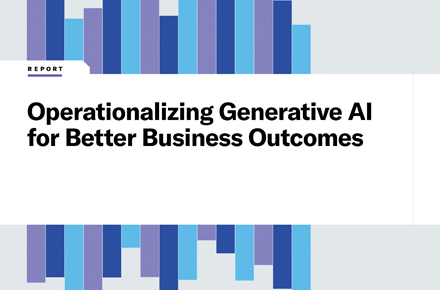Why good data goes bad (spoiler: it's fixable)
August 7, 2025 / Sundar Natarajan
Short on time? Read the key takeaways:
- Your data holds immense value, but several obstacles prevent organizations from fully tapping into it.
- Every organization accumulates data debt, including data quality and categorization issues and security concerns, and increasing data volume and complexity makes it grow.
- Data silos make it challenging to gain a comprehensive view of all your information since it’s in disparate, isolated locations.
- Other challenges include data insights, dark data and unstructured data, but taking the proper steps can help you overcome these issues.
Right now, your organization is sitting on a goldmine of information. Customer behaviors, operational patterns, market signals—it's all there.
But here's the thing: most of that valuable data is either scattered across systems, buried in outdated formats or completely invisible to the people who need it most. Without a strong data governance strategy, organizations risk not only inefficiencies but also non-compliance, reduced customer trust and missed growth opportunities. In an AI-first world, it’s all about data quality.
The good news? These aren't unsolvable problems. Let's talk about five common data challenges and practical ways to tackle them.
#1: Data debt
Here's something every organization deals with: data debt. Think data quality issues, categorization problems, security gaps, the kind of challenges that build up over time. Data debt is a given without proper data governance and management processes to resolve contributing factors like manual data entry errors, outdated systems and incomplete or inconsistent data records.
As data volume and complexity increase, this debt will grow, making it more challenging to use that data to identify market trends, customer needs, key performance metrics and other crucial information. As a result, you could lose out on opportunities to cross-sell or up-sell other services, expand your service reach, increase revenue or add new accounts.
Effective data governance doesn’t just fix problems — it creates the foundation for scalable AI, reliable reporting and enterprise-wide data confidence.
Ready to tackle that data debt? Here are some steps that can help:
- Inventory your data and document its formats, structures, schemas and locations.
- Identify dark data sources, undocumented data from daily operations, sensors, transaction records and customer interactions.
- Clean your data by removing outdated, inaccurate and duplicate information from systems and operations through data validation, scrubbing, archiving and purging.
- Set data governance policies and processes by assigning data stewards and setting up access controls, security measures, monitoring and reporting.
#2: Data silos
One data detox challenge is gaining a comprehensive picture of all your data. Data is often fragmented and stored in data silos, disparate, isolated locations. The growth in disparate data is accelerating, and it comes from many sources, including video, audio, text, social media and internet of things devices.
Siloed data warehousing limits you to available disk space and each silo requires continuous expansion and effort to keep performance high as you scale. The cloud offers expansive storage space but can be costly and take careful management to purge outdated data and move archives to less expensive storage tiers. Cloud-based data lakes give you agile, elastic data storage that can accommodate your needs.
#3: Data insights
Your data holds a wealth of insights that can help you optimize performance and costs and guide your future innovation. It offers lessons on everything from your organization’s current risks and inefficiencies to which products and solutions resonate most with customers and innovation opportunities.
A successful data modernization strategy can help you maximize your data’s potential and answering four questions can help you build it. Connecting and feeding your siloed legacy data into data lakes in the cloud can give you insights to inform your decision-making.
#4: Unstructured data
One challenge in gaining insights from your data is the amount of unstructured data. This data includes customer feedback from multiple channels, handwritten shipment notes and other fragmented information. Traditional methods of analyzing and extracting insights are more challenging with unstructured data than with organized, formatted structured data.
With AI's natural language processing and computer vision, you can automate the extraction and structuring of this unstructured data. Doing so allows you to identify patterns in this data and derive insights that assist with issue resolution, business growth and decision-making.
#5: Dark data
Another type of data standing in the way of an accurate picture of your environment is dark data. This involves the massive volume of unutilized or unanalyzed data your organization probably hasn’t documented or digitized. It may live solely in someone’s head. Sensors, transaction records, daily operations and customer interactions are examples of dark data, and it’s unusable unless you take action.
Good data governance practices, including policies, processes, standards, roles and metrics, can help you overcome this challenge.
- Cleaning your data makes it more trustworthy and involves storing data from multiple sources in one storage repository for processing, identifying missing information, duplicates and errors and verifying its accuracy.
- Cataloging can help you capture this dark data and make it useful by organizing, managing and documenting it. This strengthens data security, improves data quality and encourages data compliance.
Maximize your data’s value
Your data transformation can be smoother if you understand its unique challenges and address them with proven strategies. Curious how your organization stacks up? Explore Unisys data and analytics solutions to efficiently manage, govern and analyze your data and learn how the Ohio Courts Network worked with Unisys to gain a consolidated view of each constituent’s records and increase data integrity.
If you’re ready to eliminate silos and turn your data into a strategic advantage, connect with our data experts to explore a tailored governance plan.




















